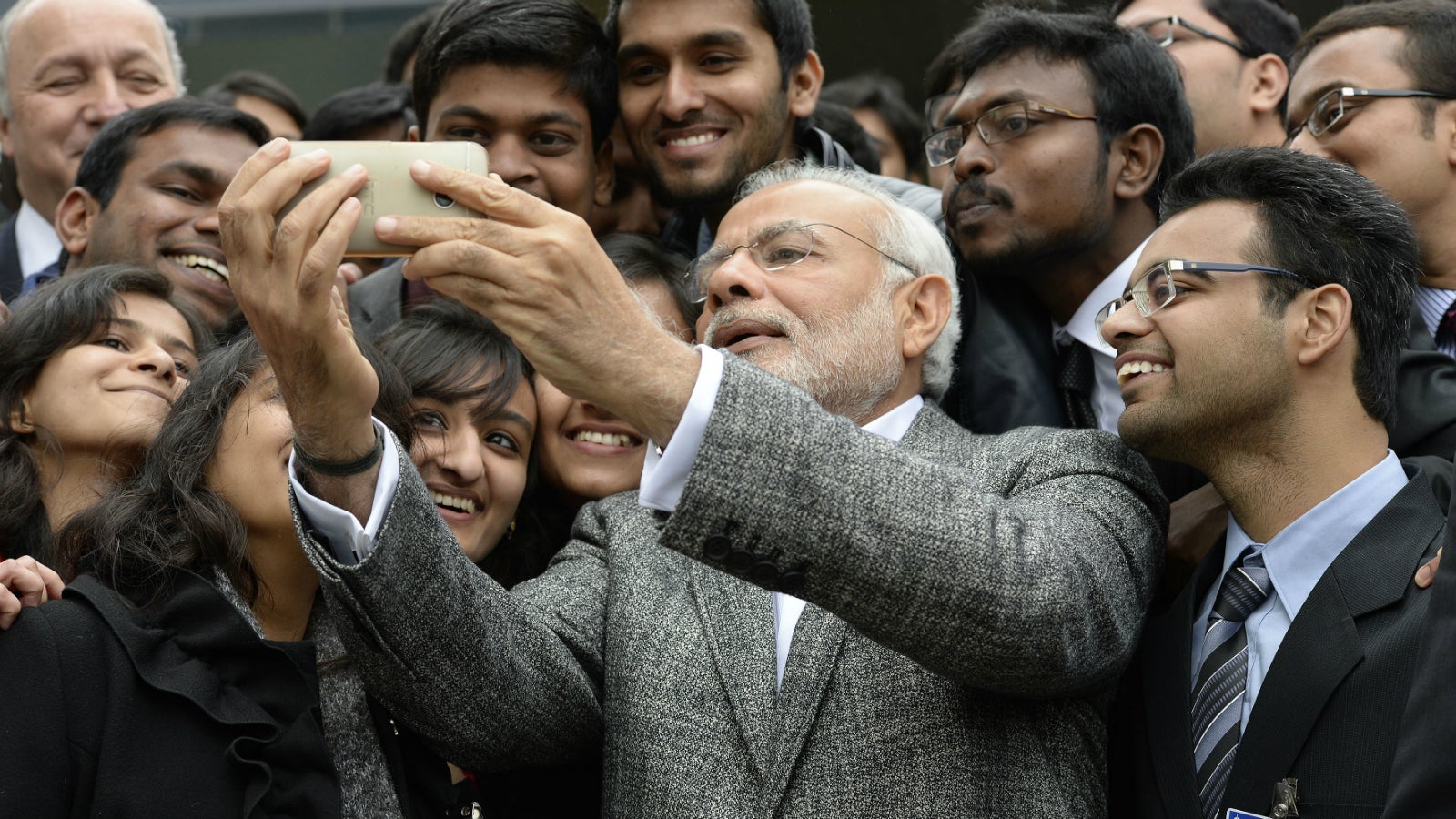The strange case of Modi and the media: No to questions, yes to selfies
On Nov. 28, 17 days after Diwali, Narendra Modi held a Diwali meet-and-greet programme for journalists at the Bharatiya Janata Party (BJP) headquarters in Delhi.


On Nov. 28, 17 days after Diwali, Narendra Modi held a Diwali meet-and-greet programme for journalists at the Bharatiya Janata Party (BJP) headquarters in Delhi.
At the event, editors and reporters disgraced themselves by mobbing the prime minister for joint selfies. Soon, social media was flooded with pictures of their teenager-ish behaviour.
That the conduct of journalists at an event for journalists was the main story for the media says a lot about how it otherwise lacked in news value. TV news is a beast that always needs to be fed, and Modi spoke just a few sentences. The busy leader apologised that the Diwali-time meeting with journalists was delayed by a couple of weeks. If it wasn’t today, he said, it would have had to be postponed till Christmas. He spoke of the importance of festivals in society, and gave the media a story idea: Why don’t you analyse the social and economic impact of festivals?
That’s all Modi said, even though this was one of his rare meetings with the press.
The prime minister then left the stage and mingled with journalists to personally exchange greetings. One journalist took out her smartphone and asked him for a selfie. Soon, everyone wanted a selfie with Modi. Seeing the selfie-crazy journalists become a mob, parliamentarian Anurag Thakur requested them to stick to one picture each. But Modi did not mind the enthusiasm.
“He (Modi) asked me not to stop anyone. He said let them take it again if they were not happy with the first one,” Thakur told the Indian Express newspaper.
In other words, Modi clearly encouraged the selfie business. Since you can’t ask him questions, you might as well take a picture with him.
Access denied
But then, Modi does love this sort of attention. Earlier this year in the US, the prime minister shoved Mark Zuckerberg out of his way to pose for the cameras. Modi’s love for the limelight is legendary, and he does give a lot of speeches.
From Manmohan Singh to Modi, India went from having a leader who spoke very little to one who speaks all the time. Modi gives rousing speeches that make good headlines and good TV, unlike his predecessor who could put you to sleep. Modi tweets and he Facebooks, his monthly radio address is also broadcasted on state television, he’s on Instagram and on YouTube, and even has an app of his own.
But, for all this hyper-communication, he chooses to remain silent when faced with tough questions from the press and the opposition. There is an overwhelming fear within the government that the media is tarnishing an image Modi has so carefully cultivated through his one-way centralised messaging.
Modi’s ministers, his party’s politicians, and his vociferous fans of social media regularly blame the media for being biased against their leader. They blame the media for being secularist, elitist, old-establishment elite, beneficiaries of shady financial transactions, and so on. One of his ministers, VK Singh, a former army chief, described journalists as “presstitutes.”
Modi has given only a handful of interviews since he became India’s prime minister 18 months ago. In his first address to bureaucrats, he told them to stay away from journalists. Ministers and officials now give very little time to reporters, preferring the ones they see as pliable, shying away from press conferences.
Modi also ended the longstanding practice of journalists travelling with the Indian prime minister on all his foreign tours. The external affairs ministry even makes sure that when Modi goes to a foreign country—and he does that all too often—Indian journalists are unable to book a room in the same hotel as him.
His office does not have a spokesperson. When TV journalists asked him questions during the monsoon session of the parliament, he stood mum, looked left and right, and walked away.
Some weeks ago, the ministry of home affairs effectively barred its officials from meeting journalists. The Editors Guild of India asked the government to engage more with the media, but to little avail.
Such is the concern over not being able to control the dominant narrative that the government has even started hiring private PR companies.
But the sight of journalists falling over each other to take selfies with the prime minister, rather than urge him to answer questions, is at odds with the idea that the media is hostile towards him and his government.
Perhaps it is Modi’s incessant desire to control the media that is leading to all the negative publicity. In a press conference in the UK recently, he showed that he is not incapable of tackling hard questions—the British media grilled him on intolerance in India.
By giving more press conferences, Modi and the BJP can actually alleviate the negative publicity. After all, it is hard to imagine that any of these journalists has a personal agenda against the prime minister.